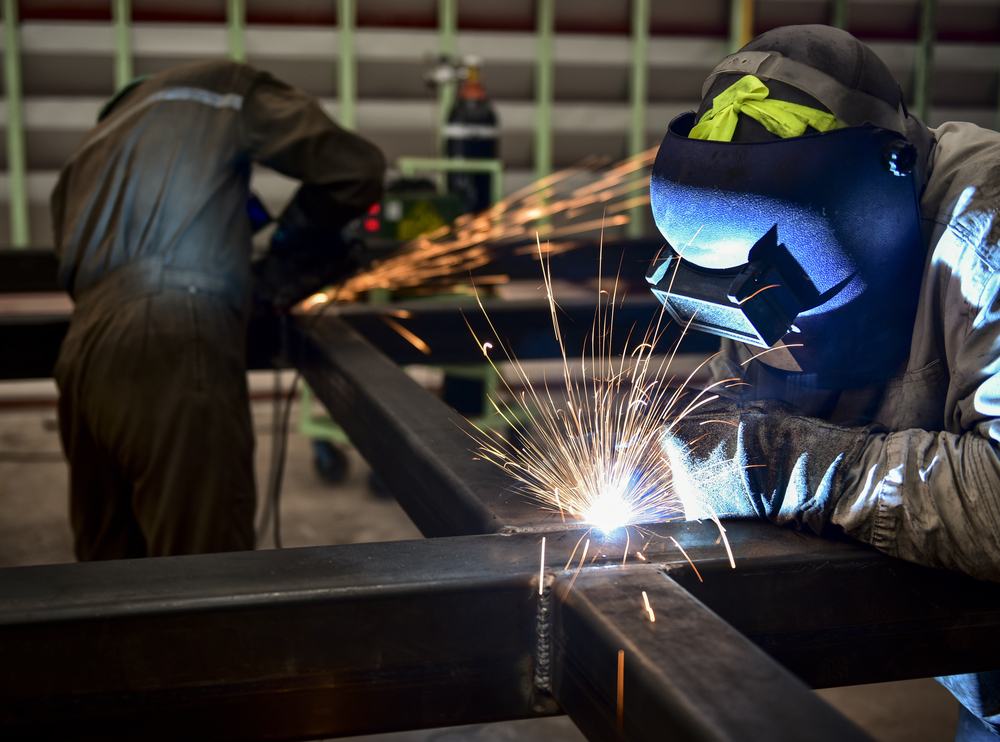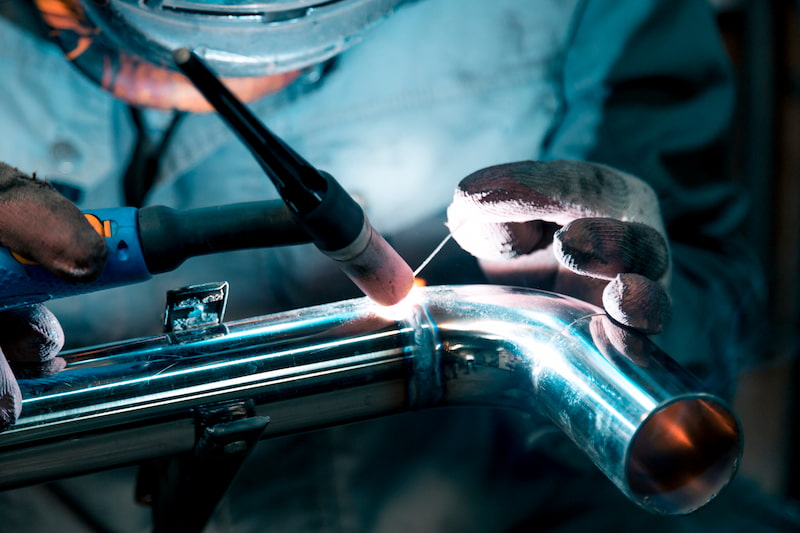Common Welding Fixing Issues and Exactly How to Address Them Properly
Welding repair work usually experience a variety of concerns that can jeopardize the honesty of the end product. Usual troubles consist of insufficient infiltration, porosity, and imbalance, amongst others. Each flaw presents unique difficulties that call for details strategies for resolution. Understanding these issues is crucial for welders intending to boost their results and skills. This discussion will discover these typical welding repair concerns and reliable methods to address them.
Poor Infiltration
Insufficient infiltration occurs when the weld steel falls short to totally fuse with the base material, resulting in weak joints and potential structural failures. This concern often comes from not enough heat input, incorrect electrode angle, or inappropriate welding speed. Welders might encounter insufficient penetration as a result of a mistake of the essential specifications for a specific product density or type. In addition, contamination on the base product's surface area can prevent effective bonding, worsening the problem. To deal with inadequate penetration, welders must guarantee suitable setups on their equipment and maintain a clean work surface. Routine assessment of welds is suggested to identify any deficiencies early, permitting timely corrections and the prevention of jeopardized architectural honesty in welded assemblies.
Porosity
Porosity is a common problem in bonded joints that materializes as little gas bubbles caught within the weld steel. This defect can compromise the integrity of the weld, bring about minimized strength and possible failure under stress. Montana Mobile Welding and Repair Welding. Porosity commonly occurs from contamination, wetness, or improper welding techniques, which enable gases to get away into the molten weld pool. To deal with porosity, welders must assure correct surface preparation, maintain a tidy working atmosphere, and make use of ideal welding parameters. Furthermore, selecting the best filler material and protecting gas can mitigate gas entrapment. Regular inspection and screening of welds can aid identify porosity early, guaranteeing timely restorative actions are taken, consequently protecting the top quality and dependability of the welded structure
Misalignment
Imbalance in welding can develop from various variables, including incorrect setup and thermal growth. Comprehending the source is important for effective resolution. Several modification strategies are readily available to straighten components and guarantee architectural stability.
Root causes of Misalignment
Welding misalignment usually comes from a variety of underlying concerns that can endanger structural stability. One primary reason is improper fit-up of parts before welding, which can bring about voids and irregular surfaces. Variations in thermal expansion during the welding procedure can likewise cause distortion, particularly if the materials being joined have different coefficients of growth. In addition, poor fixturing and securing may fail to hold elements firmly in position, resulting in movement during welding. Poorly kept tools, consisting of welding machines and devices, might introduce inconsistencies in the weld bead, more adding to misalignment. Operator error, stemming from inadequate training or experience, can additionally play a substantial duty in creating misaligned welds.

Modification Strategies Offered
Dealing with imbalance effectively calls for a combination of rehabilitative methods customized to the particular issues at hand. One typical method is making use of components or jigs to hold elements in the proper placement throughout welding, making sure consistent positioning. Furthermore, preheating the products can help in reducing distortion and improve fit-up. For considerable imbalance, mechanical realignment strategies, such as using hydraulic jacks or clamps, can be used to fix the placement prior to welding. Post-weld warm therapy may likewise be required to alleviate stresses brought on by imbalance. Finally, mindful examination and change throughout the setup stage can protect against misalignment issues from becoming considerable troubles, promoting a smoother welding process and boosting general structural honesty.
Distortion
Distortion is an usual challenge in welding that can arise from different factors, including uneven cooling and heating. Understanding the reasons for distortion is necessary for executing effective prevention strategies. Resolving this issue not only improves architectural stability yet additionally improves the total top quality of the weld.
Reasons of Distortion
When based on the extreme warm of welding, products commonly go through modifications that can lead to distortion. This sensation mainly arises from thermal growth and contraction throughout the welding process. As the weld location heats up, the material broadens; upon cooling, it contracts, which can develop interior stresses. On top of that, unequal home heating across a workpiece can intensify these stresses, resulting in warping or flexing. The sort of product additionally plays a substantial duty; metals with varying thermal conductivity and coefficients of expansion might react in different ways, resulting in uncertain distortions. Bad joint design and insufficient fixturing can add to misalignment throughout welding, raising the likelihood of distortion. Understanding these causes is important for reliable welding repair service and avoidance strategies.
Avoidance Techniques
Effective prevention strategies for distortion throughout welding concentrate on managing warm input and ensuring appropriate joint layout. Maintaining a regular heat input helps to reduce thermal development and tightening, which can result in distortion. Making use of techniques such as pre-heating the workpiece can additionally reduce the temperature slope, advertising uniform heating. Additionally, selecting proper joint styles, such as T-joints or lap joints, can boost security and lower stress and anxiety concentrations. Implementing appropriate fixturing to secure the work surfaces in position further aids in maintaining placement throughout the welding procedure. Staggered welding series can distribute home warm more equally, protecting against local distortion. By applying these strategies, welders can greatly lower the likelihood of distortion and see here now improve the overall top quality of their welds.
Breaking
Cracking is a typical concern run into in welding fixings, typically arising from various aspects such as improper cooling prices, material option, or poor joint prep work. The incident of splits can greatly jeopardize the integrity of the weld, causing potential failings during procedure. To address this issue, welders must initially analyze the origin, making certain that materials are compatible and properly chosen for the particular application. Furthermore, regulating the cooling rate during the welding process is essential; fast air conditioning can generate stress and bring about cracking. Proper joint layout and prep work also add to reducing the threat. Implementing these techniques can enhance weld top quality and longevity, inevitably reducing the chance of cracking in completed weldments.

Insufficient Blend
A considerable issue in welding repair work is insufficient combination, which occurs when the weld metal does not effectively bond with the base material or previous weld passes - Montana Mobile Welding and Repair Fabrication. This flaw can lead to weaknesses in the joint, possibly compromising the honesty of the bonded structure. Aspects adding to insufficient fusion consist of insufficient warmth input, improper welding technique, and contamination of the surface areas being signed up with. To resolve this problem efficiently, welders must assure appropriate pre-weld cleaning and surface preparation, in addition to readjust their welding parameters to accomplish ample infiltration and combination. Routine evaluation during the welding process can likewise aid determine incomplete blend early, permitting prompt corrective actions to enhance the overall top quality of the weld
Overheating
While welding fixings can enhance structural honesty, overheating offers a considerable obstacle that can result in product degradation. Extreme heat throughout welding can change the mechanical homes of steels, leading to decreased strength, increased brittleness, and bending. This sensation is particularly important in high-stress applications where structural integrity is paramount. Determining getting too hot can involve visual evaluations for staining or distortion, along with keeping track of temperature level throughout the welding process. To minimize the dangers related to getting too hot, welders need to employ proper techniques, such as controlling warmth input, readjusting traveling rate, and utilizing appropriate check here filler products. Furthermore, executing pre- and post-weld heat treatments can assist restore product buildings and boost the total high quality of the fixing, making sure long-term efficiency and security.
Often Asked Inquiries
What Are the Common Indicators of a Welding Problem?

Just How Can I Check My Welds for High quality?
To examine welds for quality, one can utilize aesthetic inspections, ultrasonic testing, and radiographic techniques. Each technique guarantees structural stability, determines defects, and confirms adherence to specified criteria, ultimately boosting the integrity of the welded joints.
What Security Preventative Measures Should I Take While Welding?
When welding, one ought to prioritize safety by using proper personal protective equipment, making sure appropriate ventilation, protecting combustible products away, preserving a tidy work area, and recognizing environments to prevent injuries and mishaps.
Can I Fix a Weld Without Redoing the Entire Joint?
Fixing a weld without redoing the whole joint is feasible, depending upon the damage (Belgrade Welding). Methods such as grinding, adding filler product, or using a welding process can efficiently deal with particular flaws while preserving the bordering framework
What Devices Are Necessary for Effective Welding Services?
Vital devices for reliable welding repair services consist of a welding maker, wire brush, grinder, safety equipment, clamps, and filler products. Each tool plays a vital role in guaranteeing top quality and security during the repair service process. Porosity generally develops from contamination, moisture, or inappropriate welding techniques, which allow gases to leave into the liquified weld pool. Improperly conserved devices, including welding equipments and devices, may introduce inconsistencies in the weld grain, more contributing to misalignment. When subjected to the extreme warmth of welding, products often undertake adjustments that can lead to distortion. Breaking is a common problem experienced in welding repair services, usually resulting from different factors such as improper cooling prices, product selection, or poor joint prep work. A significant problem in welding repairs is incomplete blend, which takes place when the weld metal does not appropriately bond with the base material or previous weld passes.